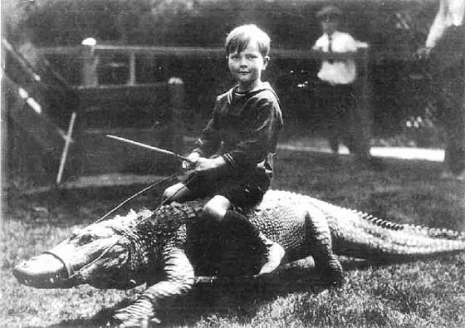Out beyond Flower-Town you'll eventually come upon a village that some folks call Two Churches; others refer to the place as Starling-Town, or Birchville, and that's the crux of the problem.
Two Churches was founded when a wagon train of settlers, trudging through scrub hills, beleaguered and heel-bitten by gnoll raiders for days, came upon a flourishing birch tree with a big fat starling in its branches. Taking it as a sign of arable land and the potential for rain, they settled (that's what settlers do). Unfortunately, the two clerics on the wagon train had different interpretations of the miracle: one thought the tree more significant, and the other, the bird.
Now, forty years later, Two Churches is exactly that - a village with two near-identical churches, one at either end of the main street. The two congregations don't even disagree with each other on much, save the bird/tree conundrum, but they've spent four decades backbiting (politely) and trying to poach one another's parishioners. At times it got contentious, but thankfully it's never yet escalated to violence; currently there is a truce, some unwritten rules, and general peace. At least, until some strangers wander through and screw it up (that's what strangers do).
In the center of town lies a cleared spot where once there had been plans to erect a statue of the tree with the bird in it. Predictably, squabbles began about the relative size of the birch and the starling, and about how they should be colored and detailed...and the project was abandoned. The blank space is considered slightly-holy by the townsfolk, and nobody walks on that circle of grass. Perhaps someday, they'll come to agreement and get that statue.
At the north end of town is the Church of Perpetual Hope, a steepled wooden structure in white with blue shingles run by Father Ignatius Rompers (Lawful fifth-level cleric). Ignatius, a pointy-nosed man in his sixties, wears his beard bushy and his hair slicked straight back with the aid of a cheap pomade that smells like a hospital. His beady grey eyes cast suspicion wantonly around the room, uninvited, but so powerful is his air of derision that he causes people to remember something minor they did wrong years ago. Ignatius resents Father Carl's cheerful nature and considers it all a big put-on - nobody could be that happy, it's all a work. Father Ignatius is unmarried but of late is considering his chances with the widow Dank. (1) Ignatius is a respectable, skilled cleric of Law who could likely teach a cleric a bird-themed spell or ritual.
At the south end of town sits the Church of Everlasting Aspirations, a steepled wooden structure in white with green shingles run by Father Carl Hardskiffle (Lawful fifth-level cleric). Carl is portly, bespectacled, and sausage-fingered; his few remaining wisps of white hair leap outward from his shiny pate like dandelion seeds. Always ready with a laugh, Father Carl is a skilled dobro player, and knows many popular songs (including "The Potbelly Mining Disaster" and "Under Lulubelle's Sundress"). Carl was once married, back in his adventuring days, but his wife left him after a caper Carl refers to as The Affair Of The Mummy's Curse (whether he means this to indicate that his wife cheated on him with a mummy is still unrevealed). In his youth, Father Carl was a fighting-cleric who served as an acolyte under the famous Father Cornelius (who fought at Cenotaph Canyon and later came out of retirement as an elderly man, started adventuring again, and was tragically killed at a jousting tournament). One of Carl's prizes from that time yet hangs in his cedar closet: an enchanted buckskin jacket of free action, stunningly beaded in the style of the Red Sky People (2). Carl is an affable, gregarious cleric of Law who could likely teach a cleric a plant-themed spell or ritual.
Visitors to the town will likely be wooed by both congregations, in hopes of getting them to sign "the book" as non-resident parishioners and giving one church a meaningless numbers advantage (until the next group of strangers pass through). Friendly townsfolk will accost visitors at the stables, or at the lobby of the Blueberry Hotel (really more of a low-rent inn), offering anecdotes on how "nice" their church is. Most will not denigrate the other church directly - after all, they have friends in that flock, or perhaps they themselves were once a member. It's a war of niceness. A visitor who is convincingly torn between the two equally-appealing options will find himself invited to a string of spaghetti dinners and bingo nights without end, as the Starling and the Birch attempt to woo him. And if he drops hints about possibly building a home in town, and becoming a resident? Palpable escalation! Non-resident parishioners are all well and good, saving souls and all that, but the prestige of tilting the accounts by adding a real-life, gonna-live-here parishioner? It would be the talk of the town for days.
Everyone in Two Churches suspects that one day - possibly soon given the ages of the good Fathers - only one cleric will remain, and the churches will unify. Due to the truce, neither cleric has taken on an acolyte, so nobody currently exists to take over either Perpetual Hope or Everlasting Aspirations upon the untimely (or predictable) expiration of its good shepherd. Certainly, however, any visiting cleric who spoke too loosely about founding a third church in Two Churches would be run out of town, and there's little chance of any other subtle cult gaining a foothold here. (3)
FOOTNOTES
1. Mrs. Frangelyne Dank, in her early fifties, has been widowed since early winter when her late husband Scooter was eaten in one gulp by a particularly large specimen of tusked grizzly. Although the widow Dank would consider remarriage - even to Ignatius Rompers - she is convinced that she cannot even entertain such ideas until her dear husband's body is put to rest with a proper burial. Scooter's corpse was never recovered, and hunters still sometimes spy the grizzly stumbling about with distended belly, moaning softy in pain. You see, Scooter always wore his father's boots - a pair of hydra-skin cowboy boots of protection +1 and acid resistance. Thus the poor grizzly has been largely unable to digest or break down Scooter at all, and has been carrying Scooter's body around in its gut for about four months now, with little prospect of a meaningful dump. Perpetual Hope, indeed! There is win-win-win-win potential here for clever visitors to Two Churches: slay (or assist) the grizzly, recover the magic boots, free Frangelyne to marry Father Ignatius, and so forth.
2. So distinctive is the beading-pattern that Red Sky People will recognize it as belonging to Father Carl, even if it is worn by someone else. This might be an efficient way to get oneself righteously executed by the Red Sky People.
3. The town's apprentice baker, Stilwell Sconeworth, unfortunately came into psychic contact with something dark while hiking in the woods, and now that Idea Of A Thing dwells in the bowels of his brain (or the brains of his bowels perhaps - demonology is an inexact science). Slowly it grows, and one day soon Stilwell will perform a small violent and unholy act, then a large one, sealing the deal. This slow progression toward dark powers will likely end with one or both Fathers ended, serial-killer style. If things get so bad that Stilwell vomits forth a physical manifestation of the Dark Thing - likely a shooshuva, given the history of gnolls in the hills around Two Churches - that critter from beyond can be transfixed by a stake of birchwood, or caused real pain by a starling's song. See, just because people are stupid and like to fight over little things doesn't mean the bird-and-tree miracle wasn't real.












